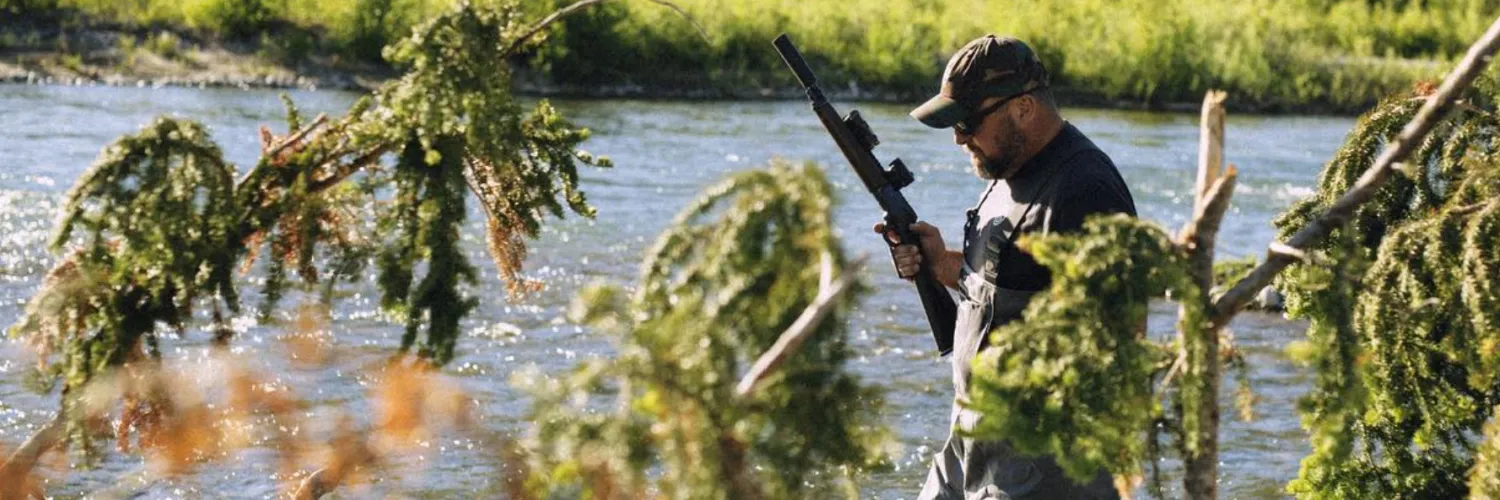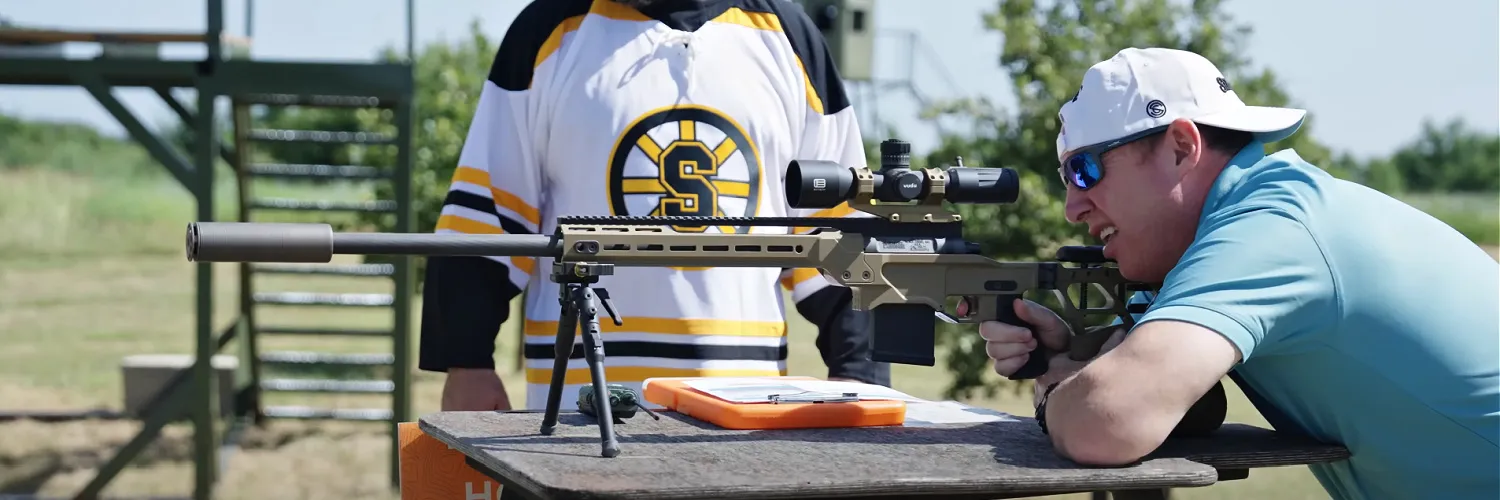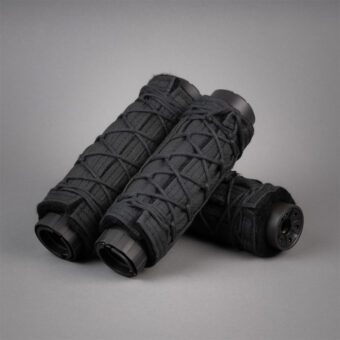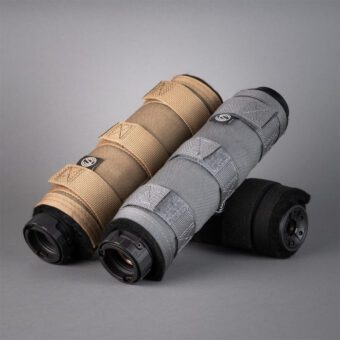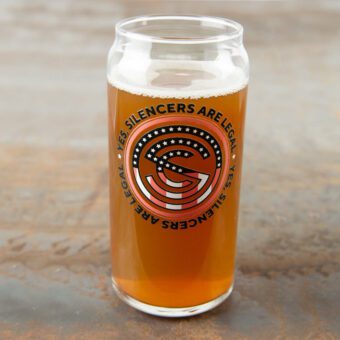Home / All About Silencers / Hunting Suppressed: The Optimal Set-Up
Hunting Suppressed: The Optimal Set-Up
Hunting Suppressed: The Optimal Set-Up
Home / All About Silencers / Hunting Suppressed: The Optimal Set-Up
Cormac McQuarrie
There are two things I frequently encounter about hunting that always leave me dumbfounded. The first it that the vast majority of hunters go into the field without a sidearm—even when they’re hunting hogs or bears. The second is how many hunters don’t protect their hearing by hunting suppressed.
Both behaviors can be dangerous. Ask anyone in the firearms industry about hearing loss and you’ll get the same response. Damage, once done, is not easily reversed. And it is cumulative. Every shot does a bit more damage.
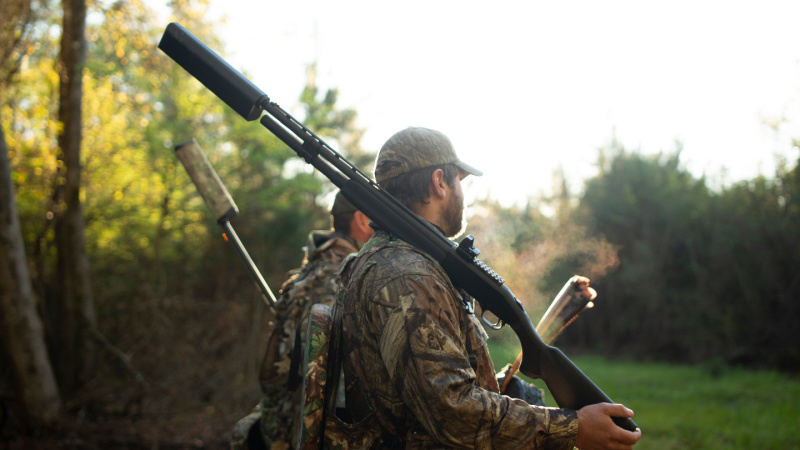
The first time I learned this valuable lesson was more than a decade ago, when I went after a rabid raccoon with a .357 outside of my house in rural Virginia. I’d been after the menace for a couple of days, finally caught sight of him where it was safe to dispatch him, and I pulled the trigger.
The effect was cinematic. The ringing crescendo in my head swelled until I heard nothing else. I got a bit of tunnel vision and fell back off the bench I’d leaped onto to get a clear shot.
I still have tinnitus now always ringing in my ears and I’ve not pulled the trigger since unless I was wearing hearing protection, or the gun was suppressed (and sometimes both).
Silencers are a viable option for those who don’t want to wear plugs or over-the-ear muffs, or electronic noise-canceling headphones. The best combination is active hearing protection that will allow for accurate situational awareness, a bit of amplification, and a capable silencer on the muzzle. It’s simply safer to shoot suppressed.
Which suppressor is best for hunting?
It depends on what you hunt and how you hunt. There are numerous considerations that prevent one easy answer to the question. If you drive to the tree stand, the weight of a suppressor hardly matters. On the other hand, if you spend hours trekking through the woods, you’re more likely to consider every ounce you carry. Weight, though, is just one factor.
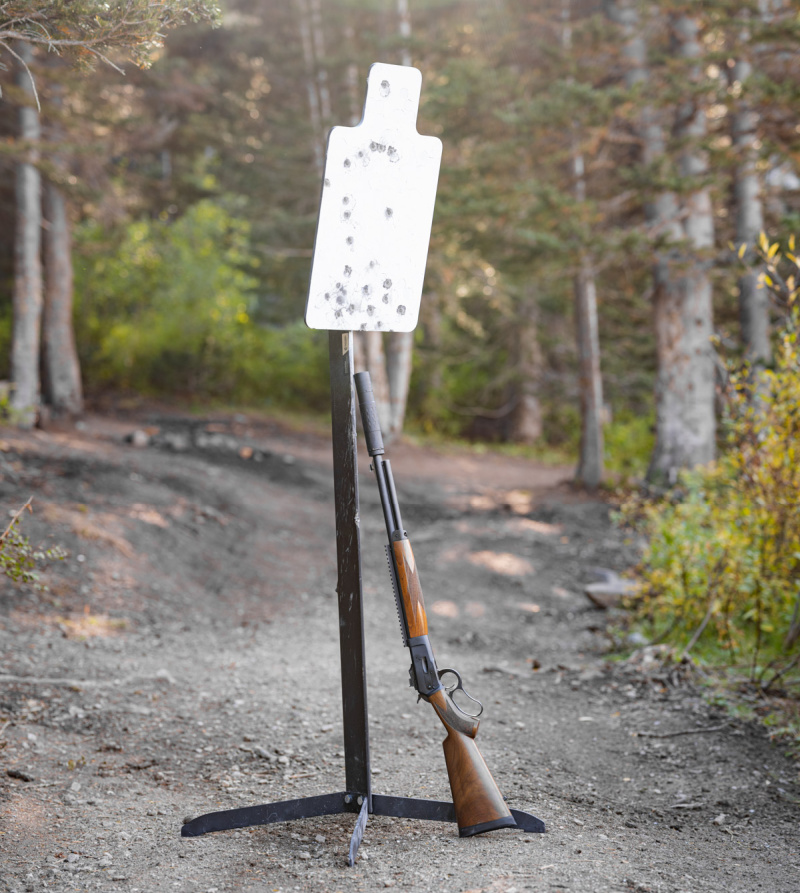
What will you be hunting with? This may seem easy, but many of us have several rifles that we take out regularly. Some silencers are optimized for a range of calibers. You can shoot 5.56, for example, through a Hybrid 46. Or you can go as large as .458 SOCOM.
Is the barrel threaded already? Will you want one silencer for multiple guns, or will this one live on a primary gun? Some silencers thread directly on a gun—others, like the Chimera 300, have a quick-attach ASR Mount and a 5/8 X 24 muzzle brake that makes affixing the silencer much faster.
Each addition, though, will need to be sighted in. Though the shift in point of impact is often small, I suggest zeroing each time you put a silencer on anything you plan to hunt with at long distances. And this is why some hunters prefer to dedicate a silencer to a specific gun.
The Optimal Set-Up for Whitetail
It depends on what you hunt and how you hunt. There are numerous considerations that prevent one easy answer to the question. If you drive to the tree stand, the weight of a suppressor hardly matters. On the other hand, if you spend hours trekking through the woods, you’re more likely to consider every ounce you carry. Weight, though, is just one factor.
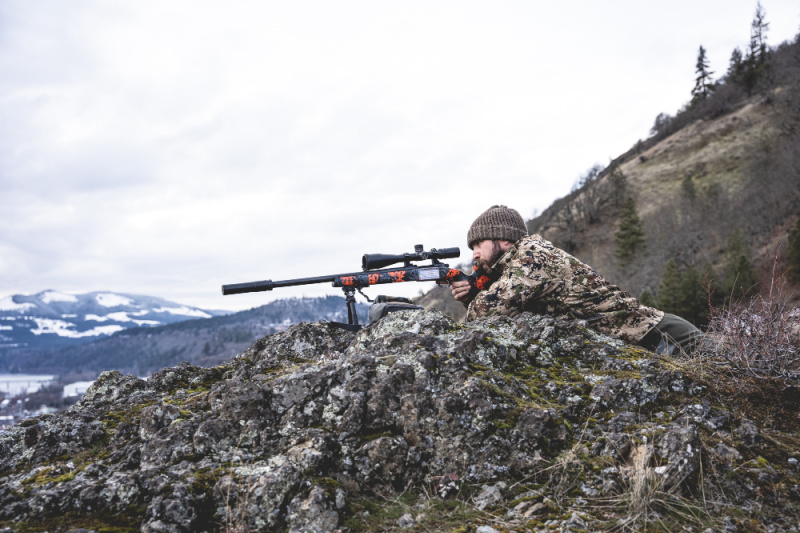
A bolt-action rifle is often exceptionally quiet when suppressed. It may help keep your location hidden—allowing for a fast follow up shot.
For those who hunt mule deer or antelope at distance, a suppressed rifle can change the outcome of a hunt. Usually, a .30 caliber silencer, like the Harvester EVO, is ideal. This multi-caliber silencer is light, easy to maintain, and short enough to remain maneuverable in the brush.
Suppressors for Extra-Large American Game
For elk, moose, buffalo, and bear, you may want to go big. A Hybrid 46M will cover rounds like the .45-70 that have a proven track record with American big game, or more powerful rounds like the .338 Lapua, if you need effective terminal ballistics at a longer range. And the modular design allows you to hunt with a longer or shorter configuration.
Suppressors for Varmints
Hunting coyotes up close or prairie dogs at insane distances? Often the sound of the first gunshot will set the remainder of the vermin off. They scatter or disappear. I’ve seen passels of hogs practically vanish at the sound of a rifle shot. Forty or fifty pigs, poof. Gone.
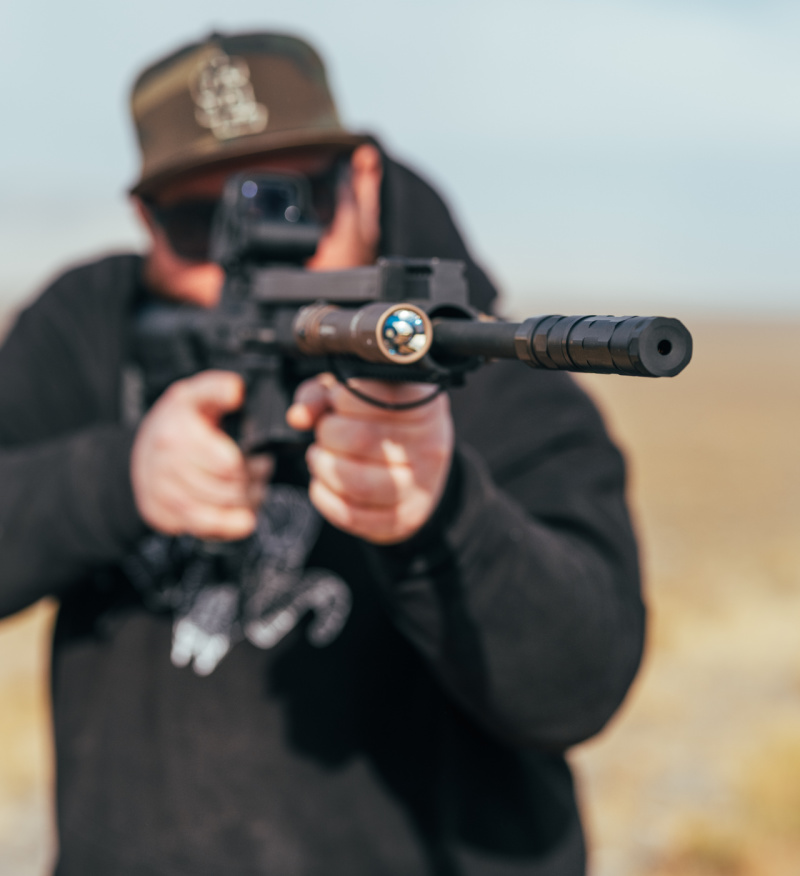
Suppressing that same shot, though, can produce different results. You will likely have the opportunity to pull the trigger a second time. For those amped up .22 Magnums or the .17 HMR, check out the Switchback 22. And if you geek out on mechanical design, this one will keep you busy for hours. When installed in one direction, it provides optimal suppression for pistols. Turn it around, though, and the suppression is optimized for rifles.
The Optimal Set-Up for Hogs
Are pigs varmints? Where I am they are. That doesn’t stop us from eating them. Still, the ethos here on the edge of the South is shoot-on-sight and shoot as many as you can.
The AR platform remains a solid choice. 7.62 x39, .308, even 300 BLK. Setting up an AR platform rifle for a silencer is easy and some guns have adjustable gas systems that will allow you to tune the action. Regulating the amount of gas in the rifle’s system helps mitigate the blowback—the gasses in a direct impingement AR return to the bolt carrier group with too much force (and some soot and unburnt powder).
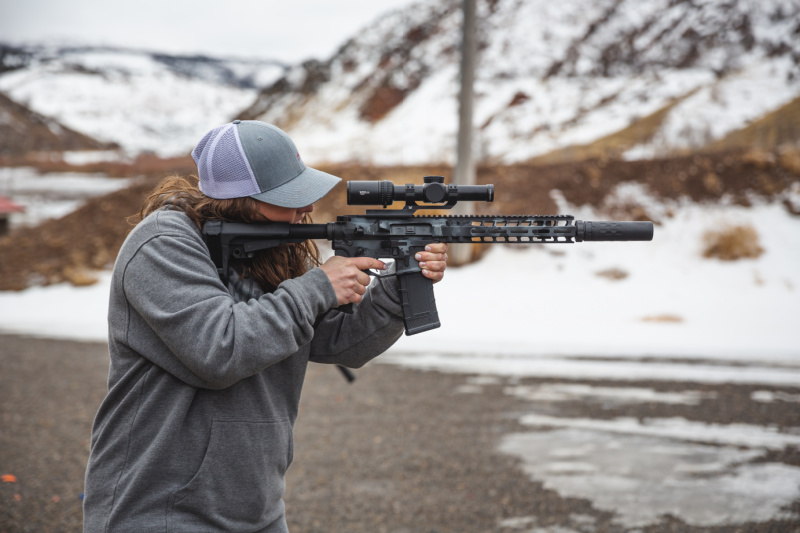
For hogs, I like the Saker series. Can’t beat this design for semiautomatic rifles.
Squirrels
I’ve shared this advice before, but here it is again. Squirrels can get annoying. I’m not talking about the ones outside my window pilfering the bird feeder. I can live with those. The noisy ones that bark at you in the woods, telling every living thing that you are there, and exactly where you are…. They can ruin a hunt if you’re not moving.
Where I hunt in the Ozarks, I’m often parked in one spot, deep in deciduous hardwoods, waiting out whitetail. I can’t say for certain that an annoying squirrel has altered a weary buck to my presence, but I’ve had hunts where all I saw were squirrels.
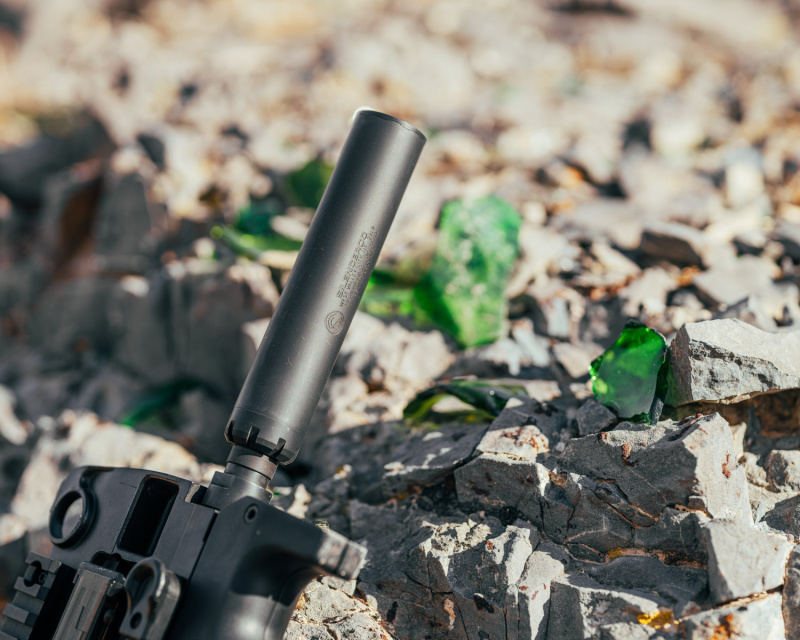
A Sparrow on the end of my old Browning Buckmark does the trick. I sight in with subsonic .22 LR which is more than enough to knock down a squirrel. My grandmother, a child of the Great Depression, taught me how to cook squirrels. There may not be as much meat on one as there is on a whitetail, but they eat.
What about hunting birds with shotguns?
There’s one set-up I have neglected to mention. Silencerco’s Salvo changed the way people thought about hunting with shotguns. The Salvo uses the threads for a choke tube for an easy connection and is modular so it ca be set up in multiple lengths.
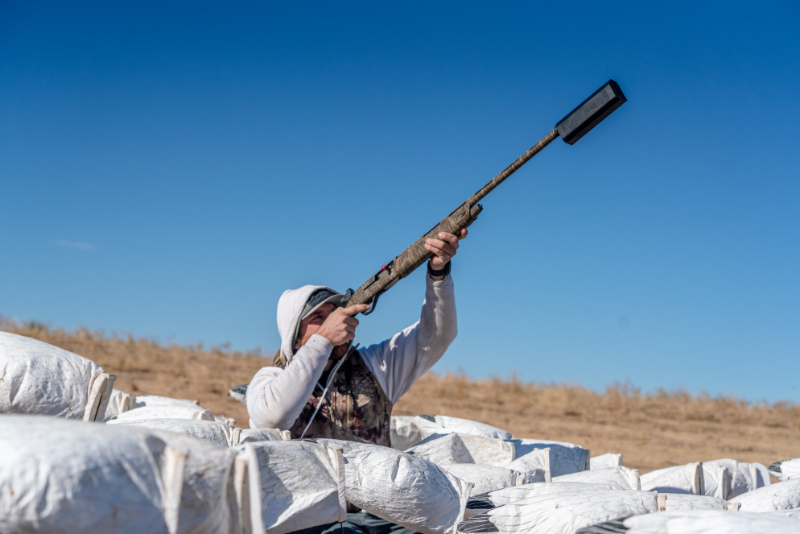
While there are obvious benefits for slugs, the Salvo works with shot as well. The extra mass on the end of your shotgun means you’ll need to put in some trigger time to get accustomed to how a suppressed shotgun swings, but the learning curve isn’t steep.
And the benefit, especially for those who hunt with dogs, is easy to understand. Their hearing matters, too. A Salvo will take the sting off a shotgun’s report. Even for those who don’t hunt with dogs—like turkey hunters—it is often imperative to hear your calls clearly. A Salvo is ideal and will keep your shot hearing safe.
What is the Optimal Suppressor Set-Up?
For me, it was the Sparrow that changed the way I began to think about what was possible with hunting suppressed. Since then, I’ve rarely gone into the field without a suppressor. I’m hooked.
If you’re just getting started, look to a suppressor that can effectively cover a range of options. A .30 caliber silencer is a great place to start. A .46 is another great starting point.
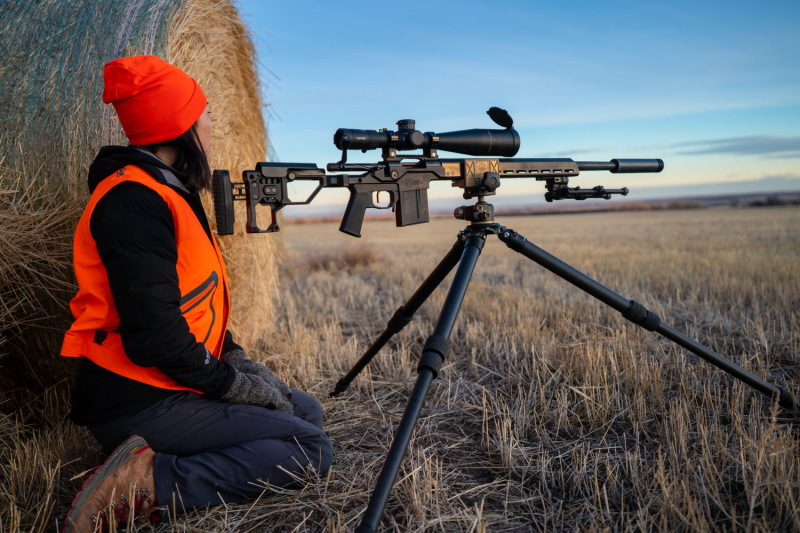
Once you are ready, a new world of tranquility will open up. Those early fall mornings here in the Ozarks are punctuated by the sound of gunfire. They don’t have to be. You don’t have to alert every whitetail in a 3-mile radius and ruin the chances for other hunters. And you don’t have to risk your hearing, either.


